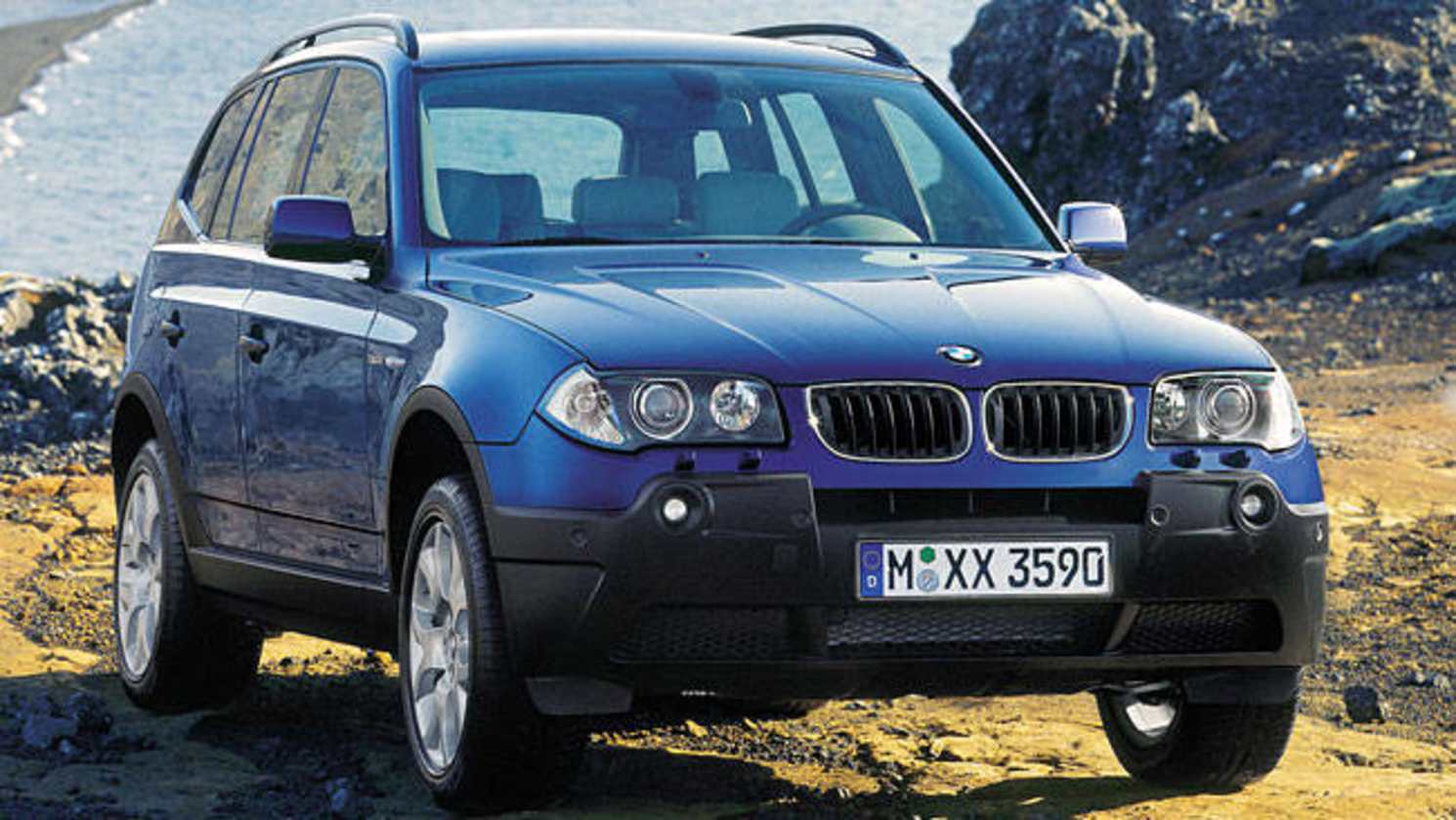Once the X5, BMW's SUV breakthrough model had blazed a trail across our 4WD landscape it was to be expected that the company would follow it up with a more compact model. That was the X3 and it arrived in 2004.
The X3 slotted in below the X5 in much the same way the 3-Series fitted into the passenger car range underneath the 5-Series.
It looked much the same as its larger cousin, but was smaller, and cost heaps less. While it had the BMW corporate look the tough chunky look that made the X5 attractive was lost, the X3 looked wimpy by comparison.
Buyers could choose between two six-cylinder petrol engines and a turbo-diesel. The base petrol engine was a 2.5-litre unit boasting 141kW and 245Nm, the larger one 3.0 litres putting out 170kW and 300Nm. The diesel option was a 3.0-litre turbocharged six that put out 160kW and 480Nm.
There was a 6-speed manual gearbox available, but only on the 2.5-litre model; all others had an automatic transmission with the option of manual shifting.
Final drive was full-time four-wheel drive with BMW's xDrive system to maintain grip in slippery going.
Underneath the suspension was independent all round, the brakes were discs with ABS, the alloy wheels were wrapped in all-round rubber, and the spare was only a space-saver.
Inside the X3 had all you could desire with the list of standard features including automatic air-conditioning, cruise, remote central locking, leather trim, multi-function steering wheel, power mirrors and windows and CD sound.
IN THE SHOP
The jury is out on BMW durability. The build quality is high, and they certainly look the goods sitting in the showroom, but history suggests that cars with the blue-and-white spinner badge can become expensive as the kays climb. If you choose to get into one it's best to do it when the kays are low and get out again before the bills start to roll in.
Look for an independent specialist to have the servicing done, as dealers tend to be very expensive. Same goes for parts. Bought from a dealer parts are expensive, but relief can be found with the independents who are able to source much cheaper parts that still do the job.
Servicing is critical so make sure any prospective purchase has had the required maintenance. Look for oil leaks around the engine, and coolant leaks from the radiator.
IN A CRASH
With a comprehensive array of active and passive safety features the X3 was given 4 stars out of a possible five by ANCAP.
Active features include ABS braking, traction control, electronic stability control and hill descent control, while passive safety is well covered by a combination of dual front airbags, head and side airbags.
UNDER THE PUMP
Nothing special on the petrol front with the 2.5-litre averaging in the mid- to high-11s by BMW's own claim, and the 3.0-litre returning low-12s.
On Carsguide's test the 2.5i auto returned an average of 11.8L/100km, bang on the BMW claim.
The turbo diesel was the way to go for economy with an average claimed of 8.6L/100km. BMW recommended 98-octane premium unleaded for the petrol models, but have approved E10 ethanol blend for the X3.
AT A GLANCE
Price new: $67,900 to $74,600
Engine: 2.5-litre six-cylinder petrol, 3.0-litre six-cylinder petrol, 3.0-litre six-cylinder turbo diesel
Power/torque: 141 kW/245 Nm (2.5), 170 kW/300 Nm (3.0), 160 kW/480 Nm (TD)
Transmissions: 5-speed auto, 6-speed auto, 6-speed man, 4WD
Economy: 11.2/11.9 L/100 km (2.5 man/auto), 12.1 L/100 km (3.0), 8.6 L/100 km (TD)
Body: 5-door wagon
Variants: 2.5i, 3.0i, 3.0d (from 2005)
Safety: 4-star ANCAP
VERDICT
Smaller, cheaper version of popular X5 set a new benchmark for compact SUVs.
BMW X3 2004: 2.5I
| Engine Type | Inline 6, 2.5L |
|---|---|
| Fuel Type | Premium Unleaded Petrol |
| Fuel Efficiency | 17.1L/100km (combined) |
| Seating | 5 |
| Price From | $6,270 - $8,800 |








.jpg)

.jpg)







.png)








.jpg)

.jpg)
.jpg)